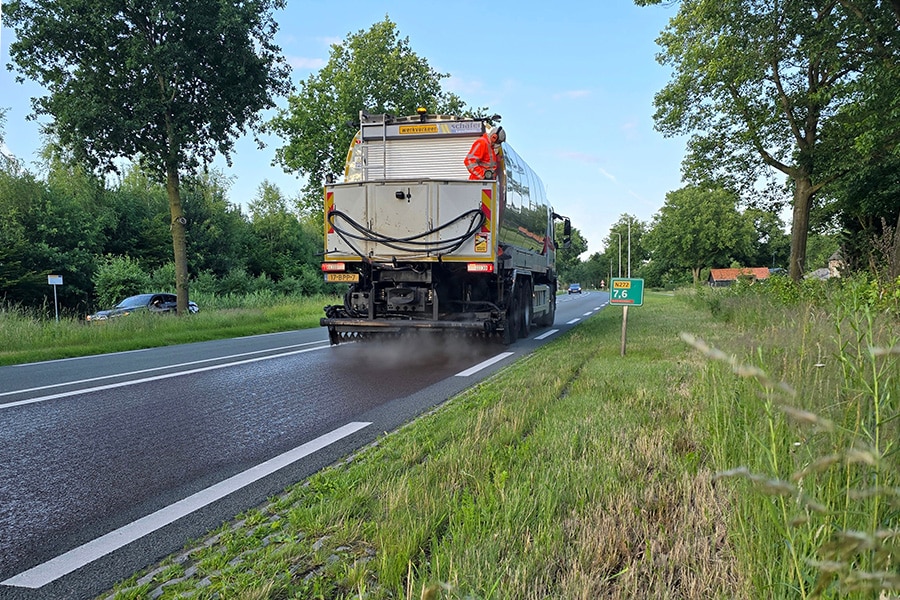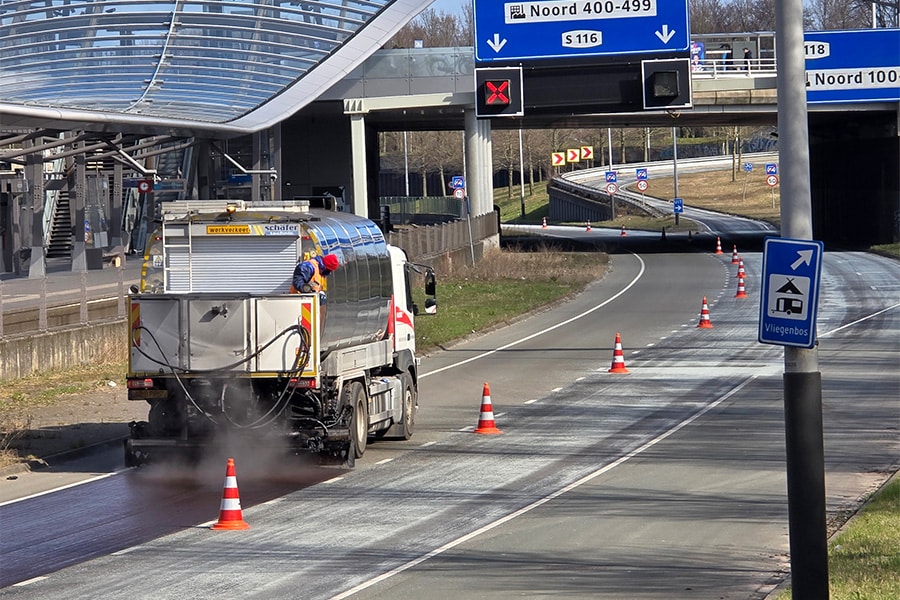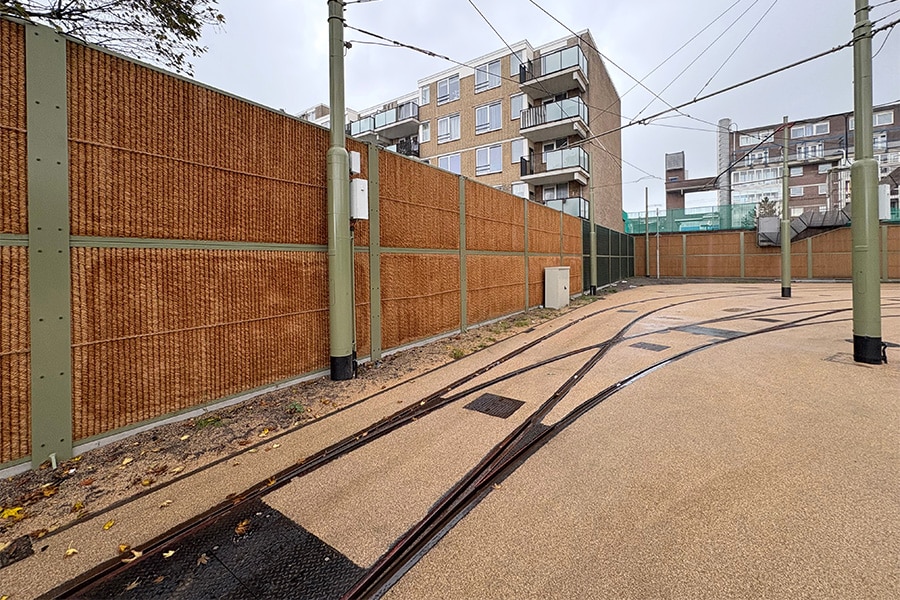
Preventive maintenance of asphalt overlays.
Preventive maintenance in road construction is scaling up briskly. Lifetime-extending maintenance of asphalt surfaces using in-situ rejuvenating products (LVOv) is rapidly developing from an innovative technique to a permanent part of the maintenance strategy. Previously, action was often taken only when the road already showed defects, but more and more road authorities are opting for preventive action. A switch that requires a different way of budgeting: investing before damage becomes visible. The results? A much more efficient use of resources and a longer life for the existing infrastructure.
The principle of life-extending maintenance with rejuvenators is ingenious, but conceptually actually heartbreakingly simple: fill in what is missing in the road, which eventually causes it to break down. To do this, it is just important to know exactly what is missing.

Supplement and soften
Latexfalt, developer of bitumen- and polymer-based products, has been charting this for several decades. Meanwhile, the Koudekerk aan den Rijn-based company has come to a clear conclusion, according to the words of research & development manager Hans Hendrikse. “Not only does every road lose an amount of binder over time, the binder that remains also becomes brittle. Especially in the top layers. This causes roads to eventually start losing stones, the phenomenon we know as fraying. This leads to weak spots that in turn can lead to greater damage. To prevent all this, the solution is simple: make sure that the binder is replenished and softened in the right way.” Precisely for this purpose, Latexfalt has developed products such as Modimuls ZV for ZOAB and Neomex Eco SE for SMA and AC Surf. “With these, we can make a road last up to 6 years longer per treatment. With minimal effort, that is. And that's great, both for budgets and for the environment.”



Applications
The technique mentioned by Hendrikse has been used by Latexfalt for many years. In the Netherlands and abroad. “Domestically, the development of LVOv was started partly from sustainability objectives,” explains manager of commerce Tom Peppink. “The longer a road lasts, the smaller the quantities of CO2 emitted, new asphalt and waste. But implementation also makes the method attractive. After the product has been applied within a traffic barrier, the road can then be reopened almost immediately. Traffic disruption is therefore minimal. Especially on busy roads, this is a decisive advantage.”
In Portugal, Latexfalt has long been performing LVOv on behalf of a private party managing toll roads on behalf of the government. Although sustainability and nuisance reduction are less of a concern there, LVOv remains the preferred option. “It extends the life of infrastructure at relatively low cost and with limited material consumption,” Peppink said. “At the same time, the application in Portugal shows that the technique also makes pure economic sense. In short, with LVOv you literally give roads extra years of life. The technique combines economic benefits with sustainability and traffic friendliness. As a result, it has become an indispensable building block in the modern maintenance repertoire.”




